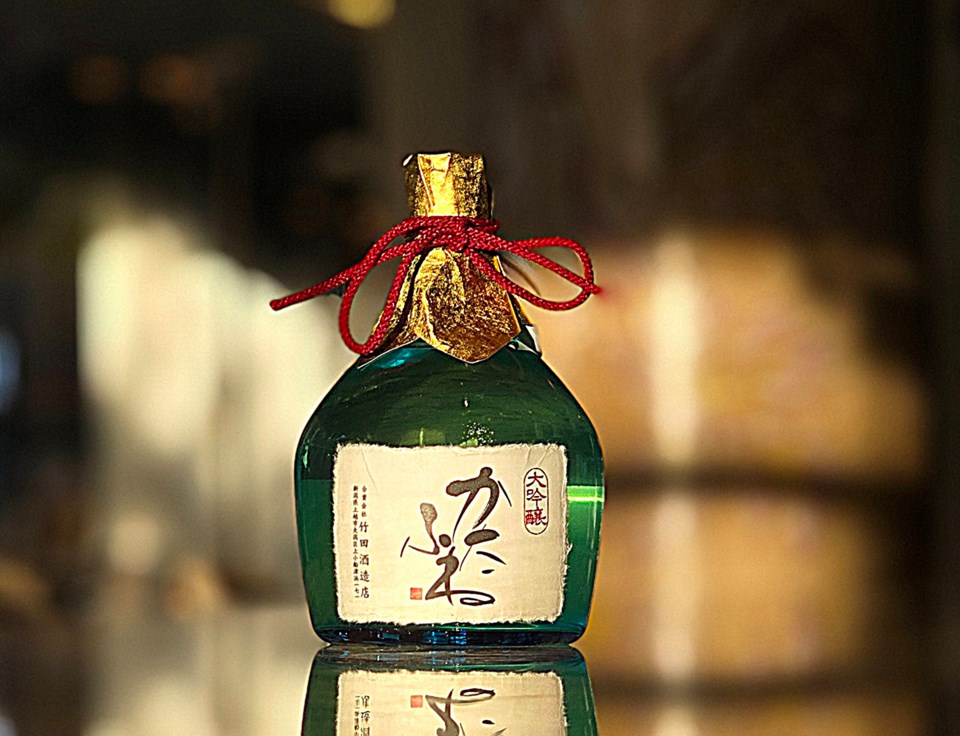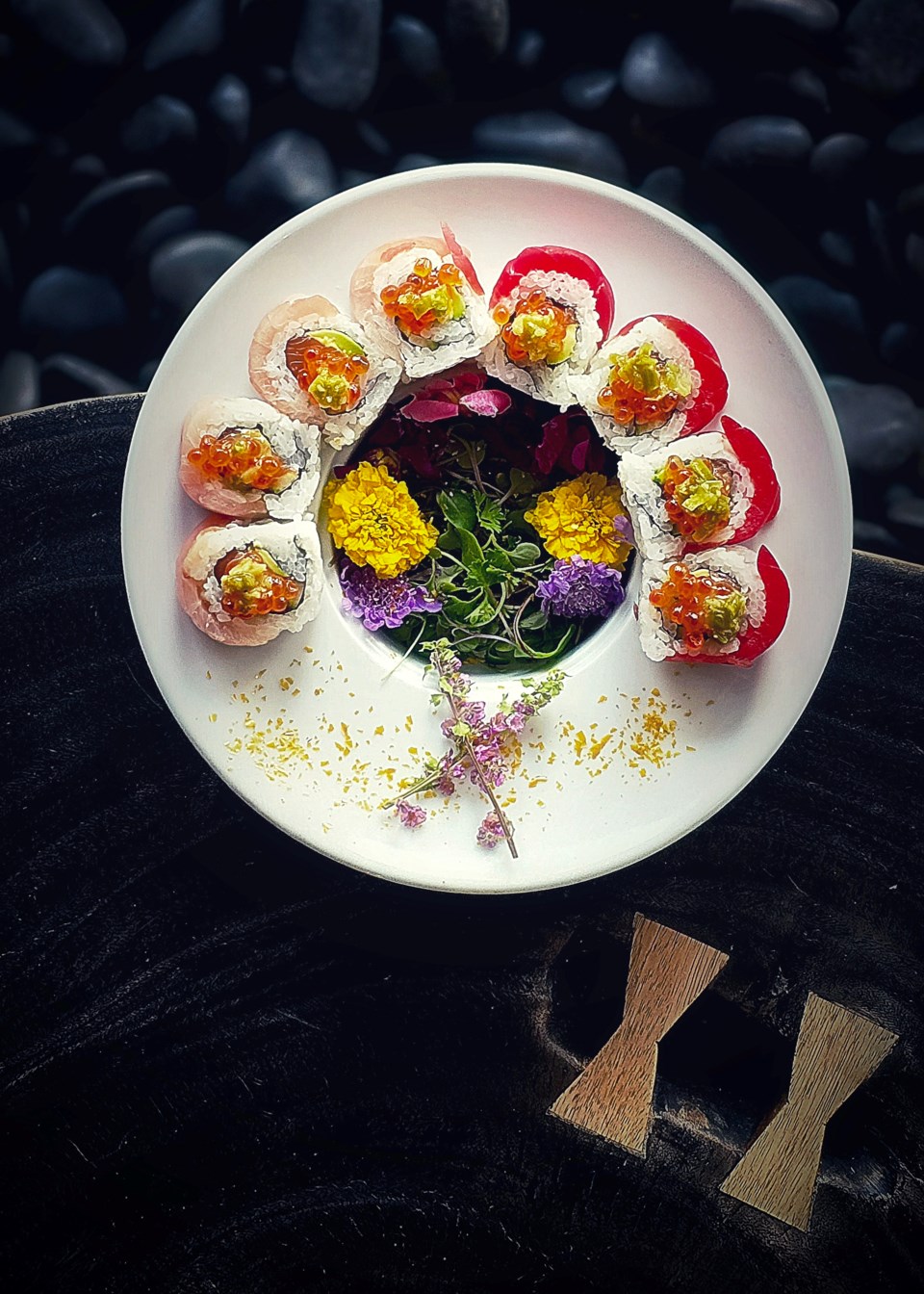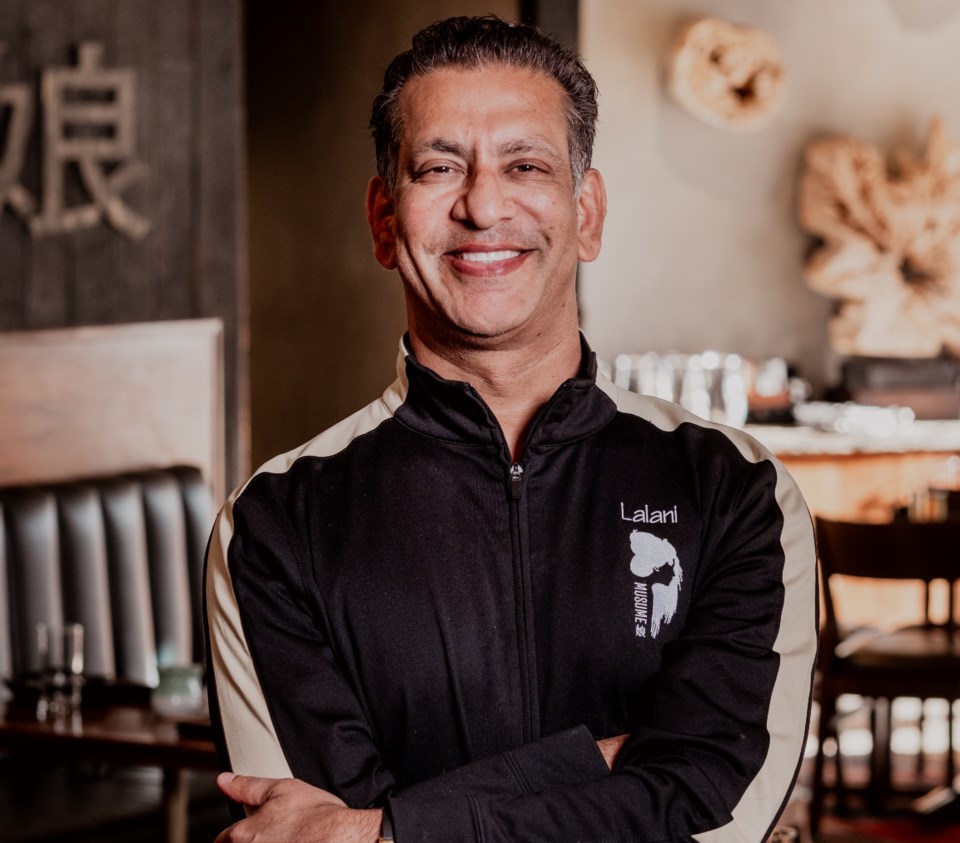It starts with a bottle. A cobalt blue one, brought to the table like a jewel. “This,” Khalil Lalani says, holding it like a secret too good to keep. “This one, people remember. They take it home. They come back and ask for another.”
This is a super limited bottle of sake from the Hakkaisan brewery in snowy Niigata Prefecture — the rice was polished down to 40 percent, and this sake was aged for two years, resulting in a smooth and glorious brew. Only a handful of bottles made their way into Texas, and Lalani got ’em. But when Lalani talks about sake, he doesn’t start with grain polishing ratios. He doesn’t mention acidity levels, mineral profiles or amino content.
He starts with bottles. Traditionally, sake bottles typically look the same. They vary in color, whether blue, brown, green or even clear, but the shape doesn’t differ that much. Then, the labels are emblazoned, typically, with kanji script that can be difficult to read even for Japanese people. But not all bottles look the same, especially for super premium sakes. “Guests don’t remember the name,” he says. “They remember the bottle.” This potion-like bottle, bulbous at the bottom with a stem to hold it, is memorable.

We’re sitting in Musume, a sleek Japanese restaurant in the Dallas Arts District, right across from the Meyerson Symphony Center. Musume has quietly built a reputation for hosting one of the best high-end sake lists in North America. This summer, he’ll open a second location in Frisco, one that will carry the largest sake list in North Texas: over 100 bottles, ranging from $50 easy-drinking brews to $1,500 rarities that few restaurants anywhere can get.
Lalani is the managing partner at Musume. The name means “daughter” in Japanese, and the restaurant is equal parts fine dining, drinks culture and downtown spectacle. Of course, they have traditional nigiri sushi and rolls, but they also serve house-smoked soy sauce and authentic dishes like kama, also known as yellowtail collar, one of the most delicious and delicate parts of the fish. And it’s perfect for sake pairing. Now, with a new Musume location opening in Frisco, Lalani is expanding north, taking his singular sake vision with him. And the question is no longer whether Frisco is ready for sake. It’s whether it can keep up.
I know sake. I’ve written an award-winning book on it: The Japanese Saké Bible. I’ve visited well over 100 sake breweries all across Japan. My oldest son works in a sake brewery in Kyoto. I can tell pretty darn quick if the person I’m talking to knows sake or not. Lalani knows sake. But more importantly, he knows how to get Texans to drink it.
“Most people think they hate sake,” he says. “Because they had bad sake in college. Heated, cheap, gave them a headache. That’s their reference point. But if I bring them a bottle of Born Gold...” Made by Katoukichibee Shouten in Fukui Prefecture, Born Gold would also make my list of must-try sakes for beginners. It’s fruity on the nose, with notes of apple, melon and sweet rice, and more fruit notes following on the palate. Approachable, elegant and delicious. I don’t think I’ve ever met anyone who doesn’t like Born Gold. But, I ask Lalani, what happens if the customer doesn’t like it? “Well, I’ll buy it back,” he says. But he’s never had to.
“The hardest part isn’t finding good sake,” Lalani says. “It’s finding sake that Americans will try. That they’ll pay for. That they’ll remember.”

He means bottles that look like they belong. Bottles with character. Bottles with stories. Because for Lalani, curation starts with packaging, but it doesn’t end there. Over the past seven years, he’s grown Musume’s sake program into one of the best — if not the best — in the entire country. At Musume, the sake list is divided not by polishing grade or rice grain but by body. Light to heavy. Crisp to bold.
“I want the guy who just got his first paycheck and wants to take his girlfriend out for a nice dinner to feel the same magic as the collector who knows what bodaimoto means,” he said. (Bodaimoto is a type of monk sake made with an ancient yeast-starter method that produces very robust and acidic sakes.)
It’s tricky because sake is complicated. While Texans are more than fluent in wine jargon, they might be less so with sake. The ingredients are deceptively simple for junmai or “pure rice” sakes: rice, water, yeast and koji. But making sake is among the most difficult drink-making processes on Earth, whether you’re polishing the rice, soaking it, making koji, making the yeast starter, brewing or pressing. Any one step along the way can ruin the brew, unlike, say, whiskey-making, where mistakes can be fixed with excellent casks and maturation.
For Lalani, the magic isn’t in the rice varietals, the yeast strains or the pressing process. It comes from hospitality. It comes from sitting down, closing the menu and trusting Lalani.
“‘What do you want to spend?’ I ask diners,” he says. “Not, what do you want to drink. Not, what do you know about sake. ‘Fifty bucks? A hundred? Fifteen hundred? Great. Let’s start there.’” From there, it becomes a guided tour. Clean and crisp? Dry and earthy? Big and bold? Each bottle matches the mood, flavor and budget.
Lalani speaks with the confidence of someone who has learned by doing. He started in tech. Owned an ice cream shop. Ran a nightclub. His background — a bachelor’s in chemistry, a master’s in computer science after that — reads like a guy who understands systems. Which is exactly how he thinks about restaurants. “It’s all about repeat customers,” he says. About building trust. About giving someone an experience they can’t get anywhere else.
And Lalani means that literally: He wants 20 percent of the Frisco list to be things you just can’t find elsewhere. The other 80 percent? Some starter sakes, some mainstream crowd-pleasers, super high-end and a whole lot of the in-between. Stuff like Dragon God. Harada. Heavensake. Koshu, or long-aged sake, when he can get it.
“You can go anywhere and eat. Anywhere,” he says. “What we try to do is teach. About sake, about where the fish is from, about how to eat something the right way. If we can teach a guest just one thing, they’ll come back.”
“People out in Frisco already come here,” he says. “Some of my best customers are in Frisco. Now, we’re going to them.”
He walks the floor every night, checks on guests, hustles over when he hears someone has a question about sake. He points out his staff’s creations — like the wrap roll, a smoked soy-drenched tuna-salmon-cucumber-avocado roll invented by a former employee who now works as an architect: “He made it four years ago. It’s still our best seller.”
And guests will find a place ready to meet them wherever they are: sake curious, sake skeptical, or already obsessed.
Because Musume isn’t about gatekeeping: it’s about initiation. Entry points. Bottles you remember. Conversations you want to continue. Khalil Lalani has built something remarkable in Dallas, and now he’s betting on Frisco — not with gimmicks but with conviction, delicious food and a sake list that might be the best between here and Tokyo.
And it all starts with a bottle. Maybe blue. Maybe brown. Maybe decorated like a painting or shaped like a sculpture. Something you want to take home. “A keepsake,” he says. “That’s what people want. Not just the drink. The memory.” And once they have it, he knows they’ll be back.
This article originally appeared in Local Profile magazine. Check out the issue here.
____
Hungry for more? Check out our dining guide.
Don't miss anything Local. Sign up for our free newsletter.




